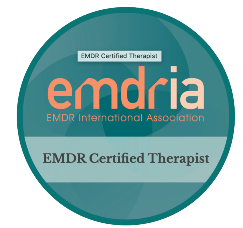Therapy for PTSD
It can be tremendously challenging to find the courage to reach out for therapy for PTSD following any kind of trauma or loss. This is particularly the case when one feels vulnerable and raw in the midst of the pain. Sometimes this reluctance causes one to push it off months or in some cases years, before seeking help. Nevertheless, getting help from a therapist that is experienced in treating trauma, can bring tremendous relief. It can help you return to a state of balance and harmony.
Some of the biggest challenges that hinder people from reaching out for help is the fear of what the therapy for PTSD will be like. In addition, people often wonder if they will be comfortable talking with the clinician, if they will feel heard or feel retraumatized recounting the event. Many times they just don’t know what to expect from the trauma therapy and as a result never explore the option. Experienced trauma clinicians know this and so they work hard to make the individual feel safe and comfortable. They will approach the trauma work patiently and slowly, taking measures to ensure the client feels ready to discuss the traumatic experience before beginning in depth work.
Some of the symptoms people struggle with following a trauma are feelings of numbness, intrusive thoughts and nightmares, difficulty sleeping and a sense of hypervigilance. If there were other traumas in the past, one may find themself with heightened sadness recalling the past event, only compounding the trauma felt with the more recent event.
One of the common treatments used by clinicians to help clients struggling with PTSD is EMDR therapy (Eye Movement Desensitization and Reprocessing.) This therapy typically unfolds as follows:
Initial phase of the work is focused on stabilizing the client and building rapport within the therapeutic relationship. This involves educating the client on PTSD and on the EMDR therapy process, and ensuring the client has adequate resources to be able to begin the trauma work. Resources are things such as strengths, supportive relationships, or other activities or thoughts that foster resilience. Therapists may choose to expand on resources, teaching the client coping strategies and enhancing the strategies they already use. They may work to empower the client with education about the psychological response to trauma and ensuring the client is stable.
Once this initial phase is complete and there is a good rapport with the therapist and adequate resources to foster resilience, the actual EMDR begins. This is when the therapist may use a light bar or their hand to elicit the client to move their eyes side to side while thinking about components of the trauma. These eye movements are done in sets alternating with a brief verbal check in where the client can report what they are noticing at that moment. There is a specific process clinicians follow throughout this phase of the therapy. Ultimately, the trauma seems to become further away, the memory becomes more distant, and the accessing of resources and adaptive perspectives become the predominant themes. As a result, clients no longer have flashbacks, intrusive thoughts or disturbing feelings associated with the event that are interfering in the present.
A common question asked about therapy for PTSD is how long will the therapy take, if doing EMDR. There is not a one size fits all answer for that. For individuals who have a complex trauma history, it may take many months to resolve the symptoms. For others with a single incident trauma that resulted in PTSD, it may only take two or three months. Typically the therapist will have a better idea about the time line for the therapy after meeting with the client one or two times. It is important to remember, though, that rushing the therapy can be detrimental and counterproductive. It is important to pace the work so that there is sufficient trust in the therapeutic relationship, the ability for the client to maintain stability and then time for appropriate trauma reprocessing.
The good news in all of this is that EMDR therapy, particularly for PTSD, can provide tremendous relief. Often times clients not only feel better, but feel even stronger than ever before with a renewed sense of empowerment and resilience for having navigated successfully through a difficult situation.
If you have questions about therapy for PTSD, or reservations about the process, contacting a therapist to discuss any concerns or anxieties about it is the first step. There is help available with evidence based strategies, specifically EMDR therapy.
For more information on anxiety, depression or other issues related to PTSD, click here.





